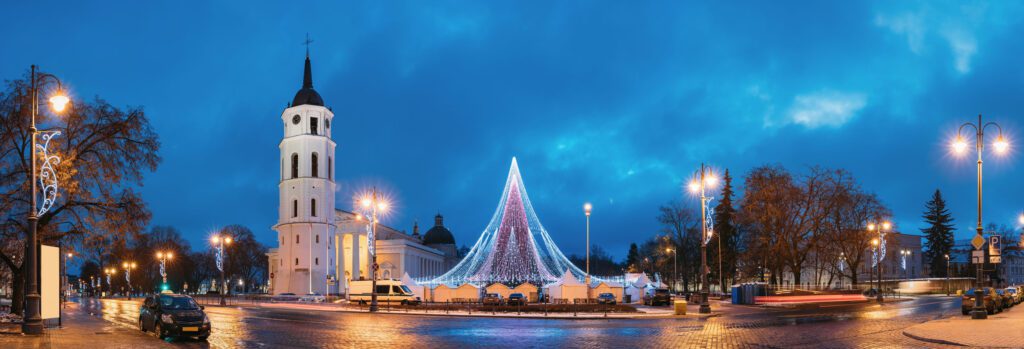In 2013, Kinze opened a production facility in Vilnius, Lithuania, that allowed for better and faster service to European customers. Rich in culture and tradition, our Kinze employees in Lithuania have beautiful and unique Christmas customs we would like to share with you.

In Lithuania, Christmas Eve, which is also the last day of Advent, is when Lithuanians officially celebrate Christmas and have their large evening family meal. Both Christmas Eve and the celebration meal are called “Kūčios”.
In preparing for the Christmas Eve meal, straw is commonly used as a table decoration, spread on the tabletop, and covered with a clean white tablecloth. Then, candles and small branches or twigs from a fir tree are used as additional decorations. The straw represents the baby Jesus lying in a manger, and a longstanding superstition says if you pull a piece of straw from under the tablecloth and it’s long, you will have a long life, if it’s short you will have a short life, and if it’s a thick straw you will have a rich and happy life!
An extra place is often set at the table for a family member who either cannot come to the meal or has died during the past year. Sometimes a candle is also lit to remember the family members who have died. Some believe that dead family members come and join the family around the table for the Christmas Eve meal. If discovered that others are alone on Christmas Eve, they are invited to feast with the family.
Traditionally, Christmas Eve is a day of strict fasting with people refraining from eating until the first star appears in the evening sky – this is the sign that abstinence may be broken. The head of the family then begins the meal with a prayer of thanksgiving for past blessings and good wishes for the coming year. A large Christmas wafer, traditionally embossed with a Christmas scene, is broken and shared with everyone at the table. After this, everyone wishes each other good luck, good health, a Merry Christmas, and a prosperous New Year.
After the ceremony, the meal begins. No less than twelve dishes (representing the Twelve Apostles) that are free of meat, eggs, and dairy, are served. Some of the dishes served, and what they represent, include:
- Herring – distasteful things to come
- Dry peas in the shape of tears – sad things in life
- Prunes – rough and difficult road we must travel
- Bread – the plenitude of sustenance during the coming year
- Fish – Christ, as represented by the first Christmas
- Boiled potatoes – humble and uneventful lives we must be ready to lead
- Sauerkraut – good and bad we must accept
- Sweet wine – sweetness and joy experienced by the coming of Christ.
There are special treats only served once a year on Christmas Eve, which include oatmeal pudding. Another is “aguonu pienas” or poppy seed milk, prepared by grinding scalded poppy seeds and mixing them with water and honey, and served with small, round dough balls. The meal concludes with coffee, fruit, and nuts. The children receive treat plates mounded with apples, nuts, figs, and candies.
Sources:
Cooper, J. (2000 – 2022). The Most Christmas Information on the Web. WhyChristmas? https://www.whychristmas.com/
Knights of Lithuania Council #144. Lithuanian Christmas Customs. Kofl144.weebly
http://kofl144.weebly.com/lithuanian-christmas-customs.html
